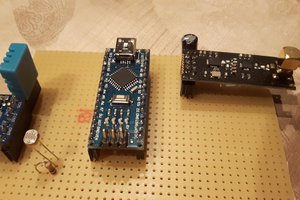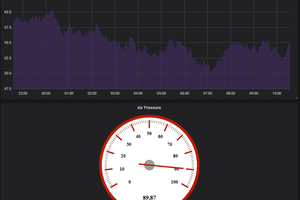SYSTEM OVERVIEW
The complete system is mounted in a modified solar radiation shield crowned with an IP67 enclosure. All sensors are mounted on a custom motherboard which takes care of power supply and mechanical mounting of these tiny parts. Sensor data is acquired using an Arduino Zero mounted within the top tier of the radiation shield. From there, data is packaged and sent to a Raspberry Pi via a serial connection, external to the enclosure. This way heat is properly dissipated and does not affect sensor measurements. The Raspberry Pi acts as the connection gateway and publishes the packaged data to zymbit.com/console. For immediate purposes data flow is unidirectional, meaning the unit is not subscribing to any outside streams, though this could easily be integrated. Additionally, with room to spare in the Raspberry Pi enclosure, we added a POE (Power Over Ethernet) splitter for versatility. This makes installation simple and improves overall reliability since the unit only requires a single cable connection and POE can handle wide line voltage variations. The user can then choose either a Wi-Fi or Ethernet connection. Of course, a simple USB cable will also work to power the unit.
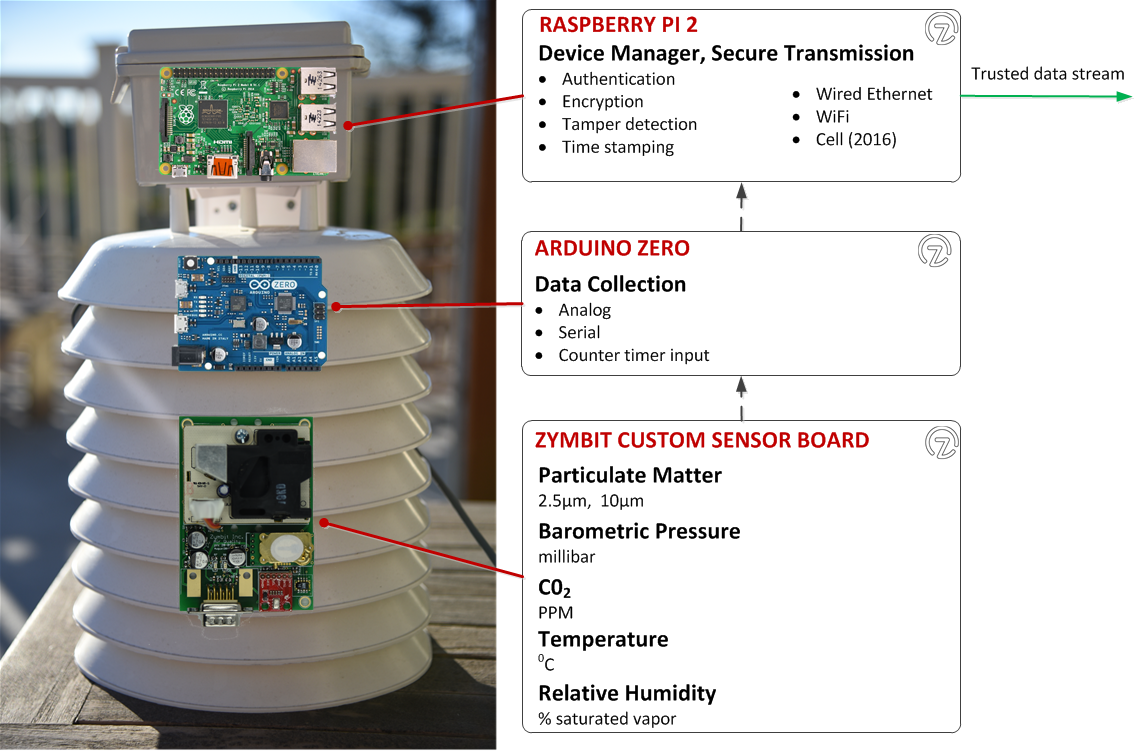
CUSTOM SENSOR BOARD
At the heart of the air quality station is a custom designed sensor board that integrates multiple sensor types:
- Particulate matter – Telaire SM-PWN-01A(2.5 micron and 10 micron channels)
- CO2 – Telaire Mini Module 5713
- Relative humidity – SHT1x
- Temperature – SHT1x
- Barometric pressure – SparkFun Altitude/Pressure Sensor Breakout with MPL3115A2
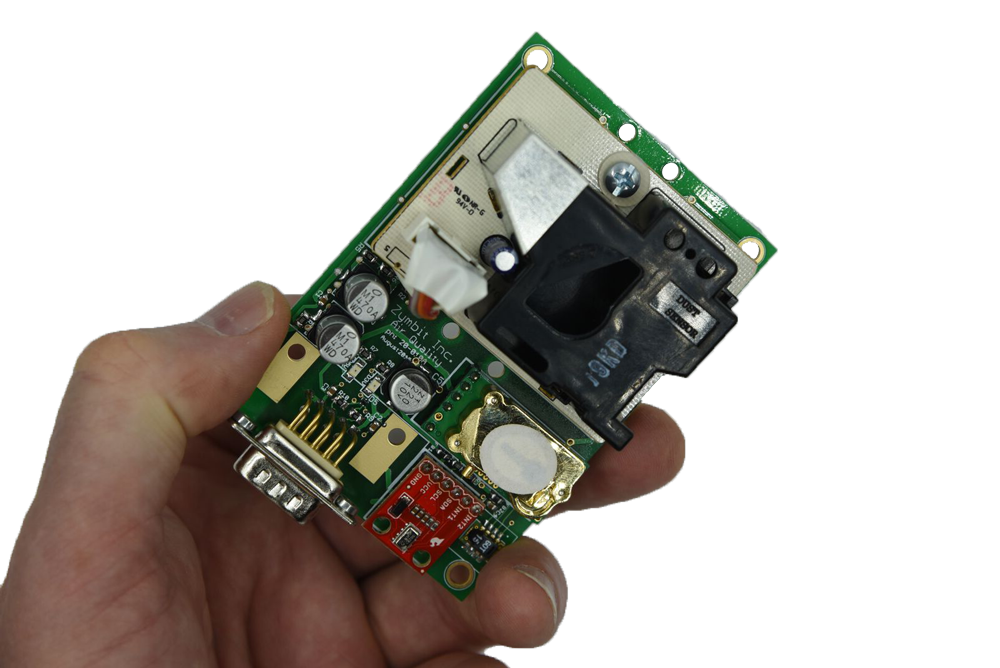
The particulate sensor was the primary driver for the board’s design; it uses a small convection heater to circulate air and this requires the module to be oriented vertically. The particulate matter sensor has two channels; one for ~ 2.5 micron particles and one for ~ 10 micron particles. Each channel produces pulses which are measured and accumulated over thirty second intervals. The other sensors are managed via I2c bus and are all averaged over 15 second intervals.
MOUNTING COMPONENTS INSIDE THE SOLAR RADIATION SHIELD
We get plenty of sun in Southern California so we need a solar shield to protect the sensors while letting air flow freely...
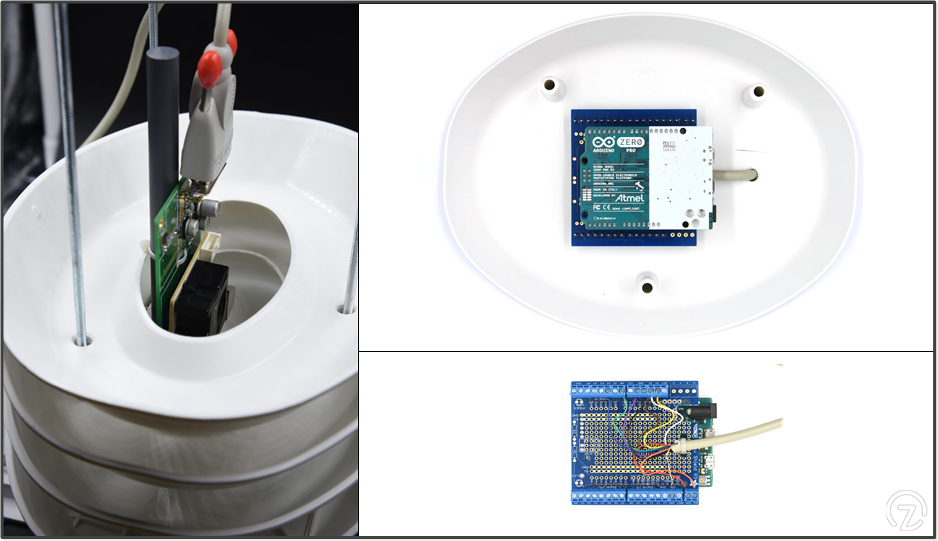
WATERPROOF ENCLOSURE FOR THE RPi
And sometimes we get rain too, so we've protected the RPi by putting it in a waterproof IP65 enclosure.
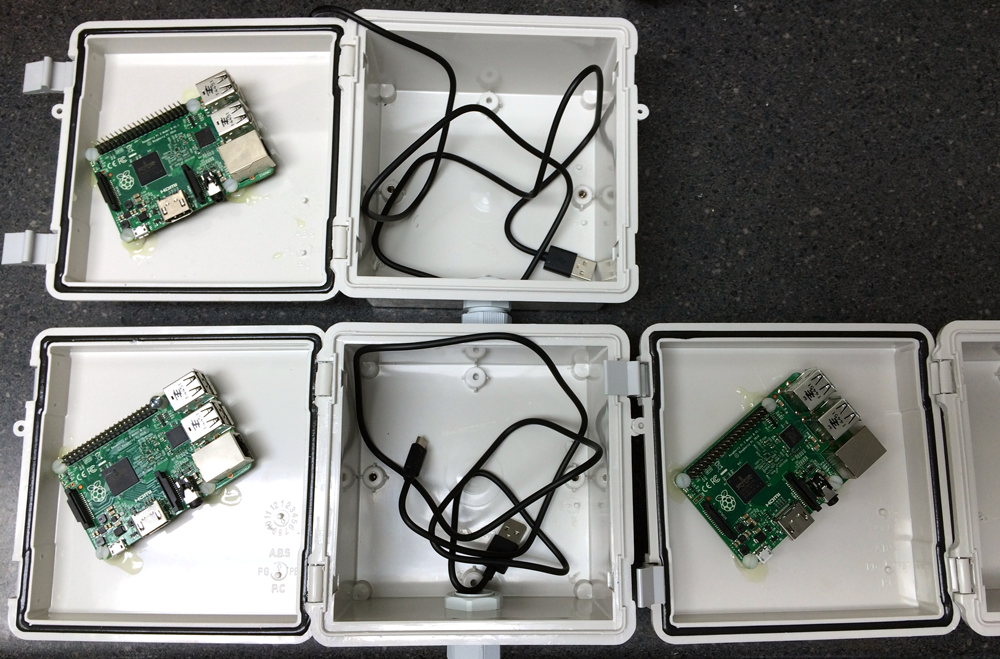
DATA WORK FLOW
As mentioned above, the Raspberry Pi acts as the connection gateway for the Arduino Zero acquisition unit. Installing and running the Zymbit Connect software on the RPi very easy. Here's a step-by-step tutorial. Once data is published, it is stored in the Zymbit Cloud and is easy to interact with using instant dashboards or the Zymbit API. For this application the engineers at Groundswell used the Zymbit API to pull in the raw data into their analysis and visualization software.
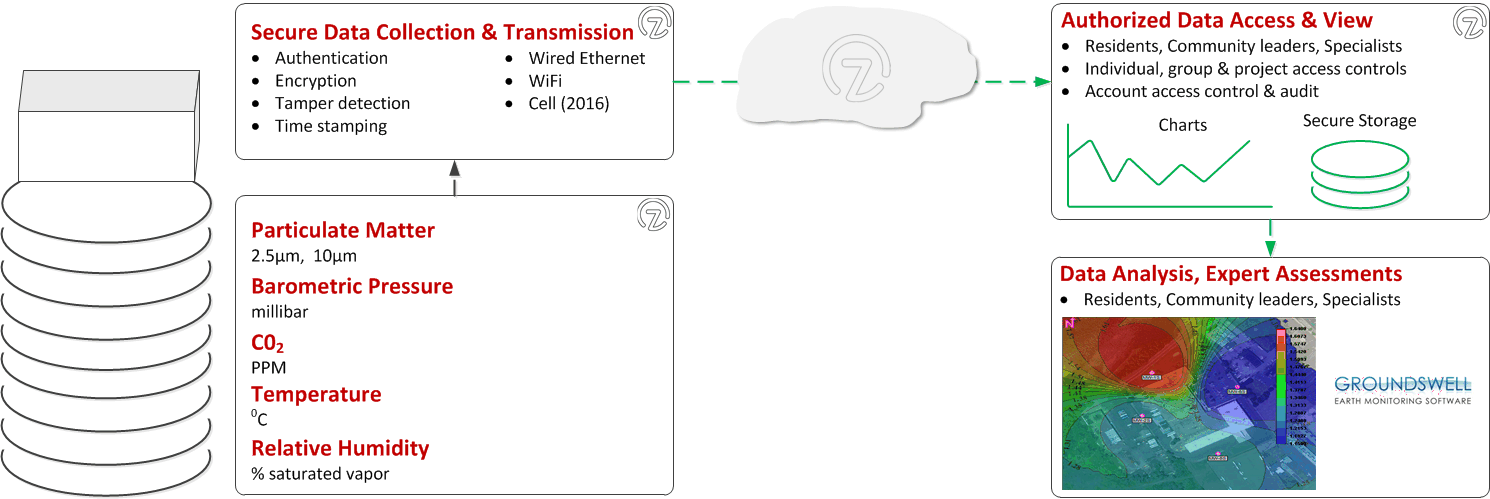
AIR QUALITY STATIONS INSTALLED IN PRIVATE BACKYARDS
Five Zymbit air quality stations are now deployed and active in the area of interest. Each unit took less than an hour to install and start receiving data. Data streams from each unit are now being integrated into Groundswell’s geospatial software and we expect everything to be operational in early November 2015.
Zymbit hardware is self contained and designed to operate outdoors in a nominally shaded area. For this initial project connection to the internet is made via Wi-Fi or ethernet connection to host building gateway/router. For subsequent projects (2016) Zymbit has plans to provide options for solar power and cellular connection.

LIVE DATA CHANNELS
 Zymbit
Zymbit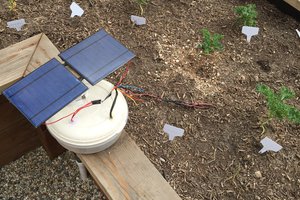
 barbercayman
barbercayman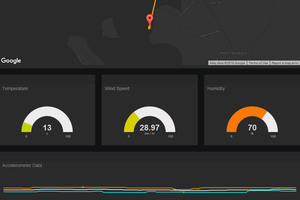
 Brenda Armour
Brenda Armour